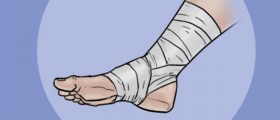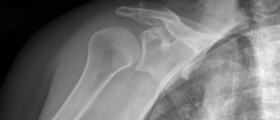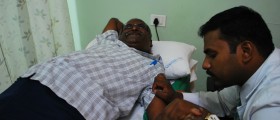Tendonitis is a condition featured by inflammation of tendons. Tendonitis can be classified into different types according to the part of the body it affects. One of them is hip tendonitis which is briefly explained in the text below. Hip Tendonitis Introduction
Tendonitis of the hip or hip tendonitis is an inflammation of the iliopsoas muscle and tendon. The iliopsoas tendon is positioned in the front of the hip and connects to the pelvis. Hip tendonitis, also called iliopsoas tendinitis, often occurs along with inflammation of the bursa sac or iliopsoas bursitis. Causes and Symptoms of Hip Tendonitis
Primary cause of hip tendonitis is overuse of tendons. People who run, swim or play soccer perform repetitive motions that strain the hip tendon which leads to inflammation. The second leading cause of hip tendonitis is aging. With age, tendons lose their elasticity and flexibility and become more susceptible to injury. Other causes of hip tendonitis include injury or trauma to the hip joint and medical conditions that cause weakening and inflammation of joints.
Symptoms of hip tendonitis include inflammation and swelling of the tendon. The affected person experiences pain and tenderness in the hip area. At first this pain is felt with activity and lessens with rest, but over time it becomes chronic. Also, pain may radiate to the buttocks or knee and cause difficulty walking. Additionally, hip tendonitis may cause snapping sound with movement.
Treatment for Hip Tendonitis
Treatment for hip tendonitis is determined by the severity of the condition. The primary treatment is to relieve inflammation and swelling. This is done with ice packs which are applied to the inflamed area for 15 to 20 minutes every 3 to 4 hours. When inflammation and swelling resolve, heat pad is applied to the area to relive pain and spasms.
Non-steroidal anti-inflammatory drugs such as Aspirin and ibuprofen are given to reduce pain and discomfort caused by tendonitis. Also, it is necessary to rest the tendon. Swelling can decrease by elevating the affected leg above the level of the heart. This is especially beneficial to do while sleeping. On the other hand, physical movement is also necessary. Stretching the tendon and muscles can decrease the pain.
Cortisone injections may be given to relieve pain and reduce swelling. The newer technique involves autologous blood injections which are given under ultrasound control. These injections contain patient’s own blood given to stimulate tendon healing.
Massage can also prove beneficial as it helps to increase blood flow to the affected muscles and speed up recovery. Surgical intervention is rarely needed for hip tendonitis.

















Your thoughts on this
Loading...